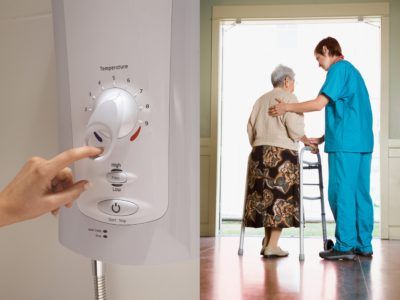

A new report, co-sponsored by Mira Showers, focusing on the operation of the Disabled Facilities Grant, highlights the value that adaptations to homes can bring to individuals and society.
“The accessibility of the home is finally being recognised as important for successful hospital discharge, to enable care to take place at home, and to allow people to live independent lives,” says the report, published by Foundations, the national body which oversees organisations that deliver works paid for by Disabled Facilities Grants (DFG).
Alterations to bathroom facilities and access works, such as external ramps or stair lifts, are the most common form of adaptation funded by DFGs with 70% of grants going to people aged over 60. In 2015-16, a total of £395 million DFGs helped 40,000 people, figures that are set to rise to £500 million and 85,000 in 2019-20.
The report ‘The Disabled Facilities Grant, Before and After the Introduction of the Better Care Fund’ praises authorities which are taking a more joined-up approach to delivering adaptations to homes, increasing speed and efficiency.
It asks suppliers to create more aspirational designs to suit modern lifestyles. According to the latest figures from the Office of National Statistics, there were ten million disabled people in England in 2011, with one in ten adults experiencing mobility problems and around 1.25 million people with significant sight loss.
Over 40% of over-65s in England are disabled. The number of people over 65 is also predicted to rise to 15.5 million by 2030, and with six million of those over 80, the need for adaptability and accessibility in homes will only increase.
So, rather than duplicate facilities or impose institutional-looking fixtures on people as they get older, it pays to design and install bathrooms that are appropriate for all age groups.
Craig Baker, marketing director at Mira, said: “More and more people are looking for bathrooms that can cater for several generations, and that still look good. It’s important for firms like ours to keep innovating, so that we can offer a range of solutions that are attractive – as well as straight-forward to install.”
In respect of showering, the multi-generational bathroom provides three main installation opportunities: wet rooms and/or easy access low trays; non-slip trays and showers that lend themselves to adaptational living, such as wireless digital products, or those with features of particular appeal to the older or frailer user.
For a full copy of the report, visit: http://www.foundations.uk.com/resources/publications/.
